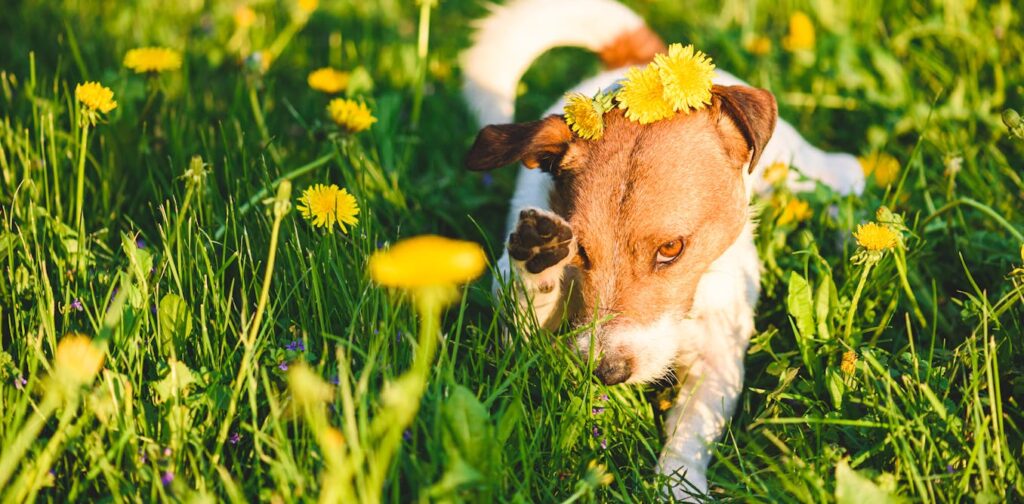
Summer often heralds the arrival of hay fever season, marked by the unmistakable sniffles and sneezes as plants and trees release pollen into the air. While many humans experience itchy eyes, runny noses, and general discomfort, it’s less well-known that our pets can suffer from hay fever too. Dogs, cats, horses, and even small animals like rabbits and guinea pigs can struggle during pollen season. Understanding how to spot the signs and manage the symptoms is crucial for pet owners.
Understanding Hay Fever
Hay fever is an allergic reaction to airborne pollen, with grass pollen being the most common trigger. Pollen from trees and weeds can also contribute. Typically, the immune system defends against harmful invaders like bacteria and viruses. However, in the case of allergies like hay fever, the immune system mistakenly identifies harmless substances such as dust or pollen as threats. This misidentification leads to a cascade of reactions, including itching, sneezing, congestion, watery eyes, and coughing. These symptoms, although frustrating, are the body’s misguided attempt to protect itself.
Recognizing Hay Fever in Pets
Humans with hay fever usually experience symptoms such as an itchy throat, sneezing, watery eyes, and a runny nose. Pets, on the other hand, often display similar symptoms: sneezing, nasal discharge, and eye irritation. Dogs and cats frequently show signs through their skin, rubbing or scratching at itchy areas and sometimes chewing their paws or belly. These areas are more likely to come into contact with pollen when outdoors. In severe cases, pets can develop dermatitis, an intensely itchy and inflamed skin condition that may require veterinary care.
If you suspect your pet might be suffering from hay fever, consulting with your vet is essential. While many people with hay fever can distinguish between colds, flu, and pollen allergies, pets can also catch colds and other infections, which may mimic allergy symptoms. A clear diagnosis is vital for proper treatment.
Managing Hay Fever in Pets
For those dealing with hay fever, whether human or animal, there are several strategies to make life more manageable. Keeping a diary of symptoms might help identify specific plants or trees that trigger flare-ups. In the UK, tree pollen peaks in April and May, while grass pollen is highest in June and July. If grass is the culprit, keeping lawns short and removing problematic plants from the garden can help. Regular grooming and washing of pets, along with cleaning their bedding, can reduce pollen exposure, leading to fewer symptoms.
Pollen forecasts are a useful tool. On days when pollen levels are high, usually during warm, dry spells, extra precautions can be taken. Pollen concentrations are typically highest during the day, especially when it’s hot and humid. Walking dogs early in the morning or later in the evening when levels are lower can also protect them from dangerously high temperatures. Keeping cats indoors and ensuring horses have appropriate shelter and rugging can further reduce exposure.
While antihistamines are a common remedy for people, they should not be used on pets unless prescribed by a vet. Many over-the-counter options are unsafe for animals and could cause harm. Vets can recommend safe alternatives and help create a management plan tailored to your pet.
Looking Ahead: The Impact of Climate Change
Pollen allergies are expected to become more common, with climate change and pollution playing significant roles. Higher temperatures cause plants to release more pollen, and pollution can make immune systems more reactive to it. Even thunderstorms can exacerbate hay fever by breaking pollen into smaller particles that are more easily inhaled.
Spotting the signs early and taking steps to limit your pet’s exposure can make a big difference, helping them stay comfortable, healthy, and happy during the pollen-heavy months.
As awareness of pet allergies grows, so does the importance of proactive management. By understanding the symptoms and taking preventive measures, pet owners can ensure their furry friends enjoy the summer months as much as they do.







